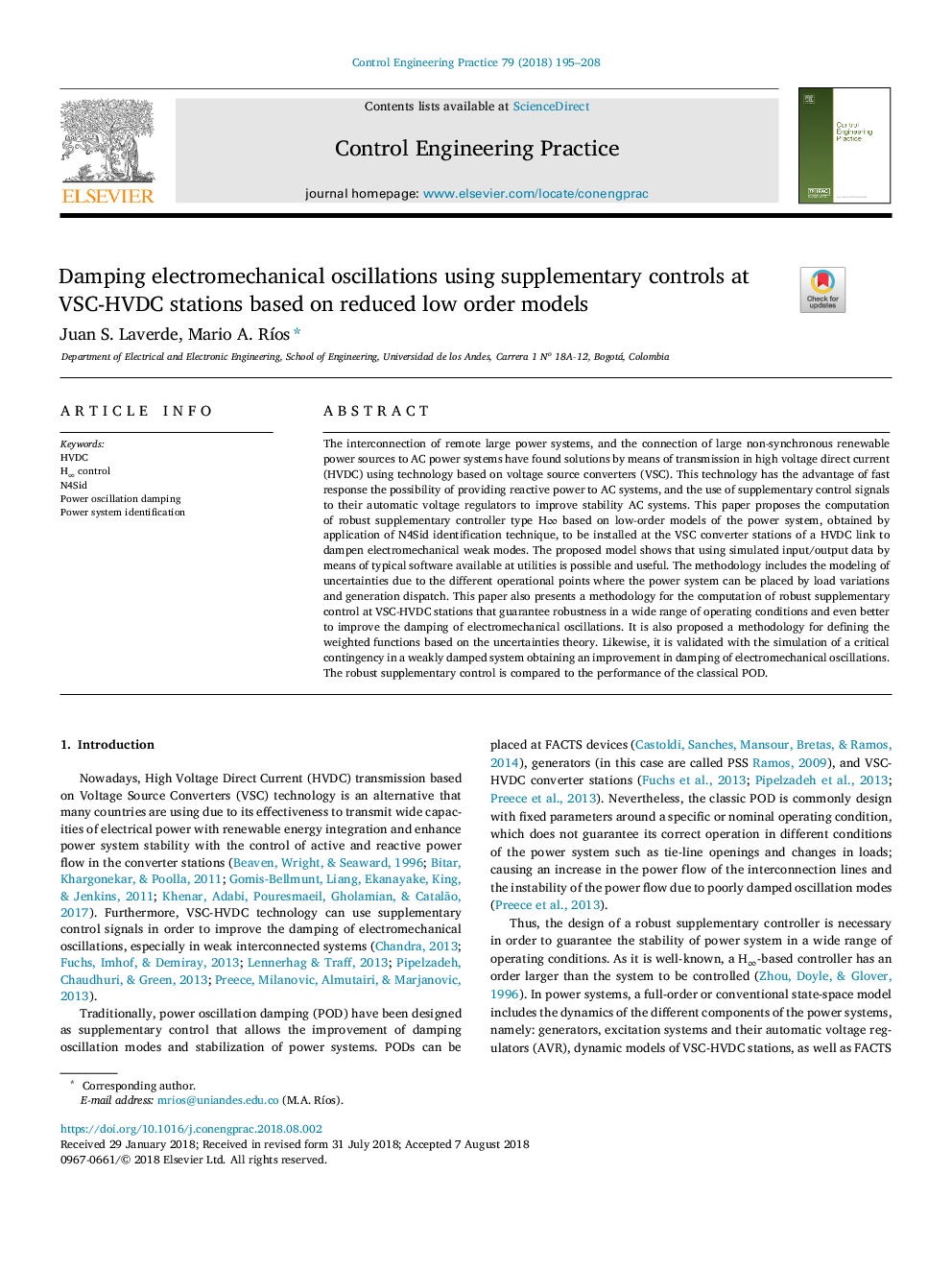| Article ID | Journal | Published Year | Pages | File Type |
|---|---|---|---|---|
| 11003566 | Control Engineering Practice | 2018 | 14 Pages |
Abstract
The interconnection of remote large power systems, and the connection of large non-synchronous renewable power sources to AC power systems have found solutions by means of transmission in high voltage direct current (HVDC) using technology based on voltage source converters (VSC). This technology has the advantage of fast response the possibility of providing reactive power to AC systems, and the use of supplementary control signals to their automatic voltage regulators to improve stability AC systems. This paper proposes the computation of robust supplementary controller type Hâ based on low-order models of the power system, obtained by application of N4Sid identification technique, to be installed at the VSC converter stations of a HVDC link to dampen electromechanical weak modes. The proposed model shows that using simulated input/output data by means of typical software available at utilities is possible and useful. The methodology includes the modeling of uncertainties due to the different operational points where the power system can be placed by load variations and generation dispatch. This paper also presents a methodology for the computation of robust supplementary control at VSC-HVDC stations that guarantee robustness in a wide range of operating conditions and even better to improve the damping of electromechanical oscillations. It is also proposed a methodology for defining the weighted functions based on the uncertainties theory. Likewise, it is validated with the simulation of a critical contingency in a weakly damped system obtaining an improvement in damping of electromechanical oscillations. The robust supplementary control is compared to the performance of the classical POD.
Related Topics
Physical Sciences and Engineering
Engineering
Aerospace Engineering
Authors
Juan S. Laverde, Mario A. RÃos,
